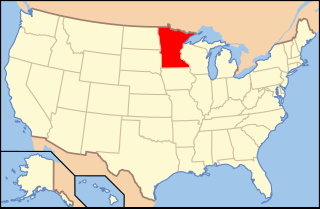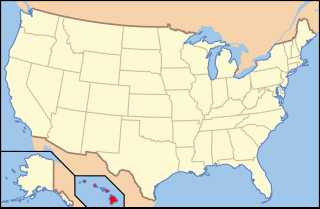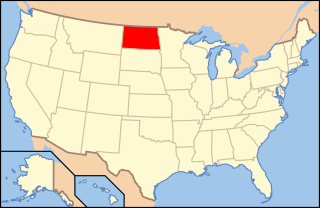This article needs additional citations for verification .(April 2018) |
This article concerns LGBT history in Florida.
This article needs additional citations for verification .(April 2018) |
This article concerns LGBT history in Florida.
After Florida became a territory of the United States in 1821, the Territorial Legislature enacted laws against fornication, adultery, bigamy, and incest, as well as against "open lewdness, or...any notorious act of public indecency, tending to debauch the morals of society." [1]
Florida's first specific sodomy law, which was enacted in 1868 and made sodomy a felony, read: "Whoever commits the abominable and detestable crime against nature, either with mankind or with beast, shall be punished by imprisonment in the state prison not exceeding twenty years." In 1917, the Florida Legislature added a lesser crime, a second-degree misdemeanor: "Whoever commits any unnatural and lascivious act with another person shall be punished by fine not exceeding five hundred dollars, or by imprisonment not exceeding six months." [2] Homosexuality was not addressed specifically in the 1917 law.
The general attitude about homosexuality in Miami mirrored many other cities' across the country. Though gay nightlife in the city had enjoyed the same boisterous existence as other forms of entertainment in the 1930s, by the 1950s, the city government worked to shut down as many gay bars as possible and enacted laws making homosexuality and cross-dressing illegal. [3] From 1956 to 1966, the Johns Committee of the Florida Legislature actively sought to root out homosexuals in state employment and in public universities across the state, publishing the inflammatory "Purple Pamphlet", which portrayed all homosexuals as predators and a dire threat to the children of Florida.
In the 1960s The Miami Herald ran several stories implying the life of area homosexuals as synonymous with pimps and child molesters, and WTVJ, a television station, aired a documentary titled "The Homosexual" in 1966 warning viewers that young boys were in danger from predatory men. [4]
In the 1960s, gay couple Ray and Henry Hillyer began organizing LGBT-inclusive beach parties in Pensacola with some of their friends every Fourth of July weekend. [5] The parties continued to grow through the 1970s, attracting several thousand partygoers. [5] In the 1980s and 1990s, as tens of thousands of LGBT people and allies attended each year, the event began to attract protests from conservative residents and church groups. [5]
Florida courts interpreted the 1868 law to prohibit all sexual activity between two men or two women. In 1971, the Florida Supreme Court struck down the "crime against nature" statute as unconstitutionally vague. The court retained the state's prohibition on sodomy by ruling that anal and oral sex could still be prosecuted under the lesser charge of "lewd and lascivious" conduct. [6]
The public image of homosexuals changed with liberalized social attitudes of the late 1960s. In 1969, the Stonewall riots occurred in New York City, marking the start of the gay rights movement. Though gay life in Miami was intensely closeted, and bars were subject to frequent raids, Christ Metropolitan Community Church—a congregation for gay and lesbian Christians in Miami—was founded in 1970 as a religious outlet, attracting hundreds of parishioners. Also in 1970, Florida State UNiversity students in Tallahassee founded the first Gay Liberation Front in the southern United States. [7]
The 1972 Democratic National Convention was held in Miami, featuring, for the first time, a public speech about the rights of gay men and lesbians by openly gay San Francisco political activist Jim Foster. Jack Campbell opened the Miami branch of Club Baths in 1974. When it was raided, he made sure that all charges against those arrested were dropped, filed a lawsuit against the Miami Police Department prohibiting further harassment, and received a formal apology from the police. [8] Even the depiction of gay men and lesbians in the local newspaper had changed to that of a silent, oppressed minority. By 1977, Miami was one of nearly 40 cities in the U.S. that had passed ordinances outlawing discrimination against gay men and lesbians. [9]
In 1977, partly due to the anti-gay Save Our Children campaign led by Anita Bryant in Miami, the Florida Legislature passed a law specifically prohibiting homosexuals from adopting children. [10]
In 1978, in an effort to stop the anti-gay work happening in Florida, the Florida Task force was created. It was the lesbian and gay civil rights lobby in Tallahassee, and likely the first statewide LGBT organization with a paid lobbyist. Patrick Land was the first executive director/lobbyist. Dr. Ronni Sanlo was the second, serving from 1981 to 1983. One of the primary pieces of work during that time was to fight the Bush-Trask amendment, an addendum to the Florida appropriations bill that would have eliminated all state funding (including football money!) to Florida's colleges and universities that supported LGBT student organizations. The bill was signed into law but was found unconstitutional by the Florida Supreme Court.
In 1997, Equality Florida was established, becoming the largest statewide LGBT rights lobby organization. [11]
Same-sex sexual activity remained illegal in Florida until 2003, when the United States Supreme Court struck down all state sodomy laws with Lawrence v. Texas . [12] As of mid-2011, the state's sodomy law, though unenforceable, had not been repealed by Florida legislators. [13]
Since the passage of the Florida Amendment 2 on November 4, 2008, by a vote of 61.9% in favor and 38.1% opposed, both same-sex marriage and civil union had been banned by Florida's state constitution. Despite that temporary setback, a major victory for LGBT rights on November 25, 2008, when Judge Cindy S. Lederman declared the ban on homosexuals adopting children violated the equal protection rights under the Florida Constitution. Florida Third District Court of Appeal ruled in In re: Gill favor of the ruling on September 22, 2010, thus legalizing same-sex adoption in Florida after 33-year ban.
In 2009, Miami Beach held its first gay pride parade ever and in 2020 the Greater Fort Lauderdale will be host to the first-ever Pride of the Americas Festival [14]
Same-sex marriage in Florida became legal on January 6, 2015, as result of Brenner v. Scott .
This is a list of notable events in the history of LGBT rights that took place in the year 1998.

The rights of lesbian, gay, bisexual, and transgender (LGBT) people in the U.S. state of Utah have significantly evolved in the 21st century. Protective laws have become increasingly enacted since 2014, despite the state's reputation as socially conservative and highly religious. Same-sex marriage has been legal since the state's ban was ruled unconstitutional by federal courts in 2014. In addition, statewide anti-discrimination laws now cover sexual orientation and gender identity in employment and housing, and the use of conversion therapy on minors is prohibited. In spite of this, there are still a few differences between the treatment of LGBT people and the rest of the population, and the rights of transgender youth are restricted.

In the United States, public opinion and jurisprudence on lesbian, gay, bisexual, and transgender (LGBT) rights have developed significantly since the late 1980s. In 1961, beginning with Illinois, states began to decriminalize same-sex sexual activity, and in 2003, through Lawrence v. Texas, all remaining laws against same-sex sexual activity were invalidated. In 2004, beginning with Massachusetts, states began to offer same-sex marriage, and in 2015, through Obergefell v. Hodges, all states were required to offer it. In many states and municipalities, LGBT Americans are explicitly protected from discrimination in employment, housing, and access to public accommodations. Many LGBT rights in the United States have been established by the United States Supreme Court, which invalidated state laws banning protected class recognition based upon homosexuality, struck down sodomy laws nationwide, struck down Section 3 of the Defense of Marriage Act, made same-sex marriage legal nationwide, and prohibited employment discrimination against gay and transgender employees. LGBT-related anti-discrimination laws regarding housing and private and public services varies by state. Twenty-three states plus Washington, D.C., Guam, and Puerto Rico outlaw discrimination based on sexual orientation, and twenty-two states plus Washington, D.C., outlaw discrimination based on gender identity or expression. Family law also varies by state. Adoption of children by same-sex married couples is legal nationwide since Obergefell v. Hodges.
This is a list of notable events in the history of LGBT rights that took place in the 1970s.

Lesbian, gay, bisexual, and transgender (LGBT) persons in the U.S. state of Minnesota have the same rights and responsibilities as non-LGBT people. Minnesota became the first U.S. state to outlaw discrimination based on sexual orientation and gender identity in 1993, protecting LGBT people from discrimination in the fields of employment, housing, and public accommodations. In 2013, the state legalized same-sex marriage, after a bill allowing such marriages was passed by the Minnesota Legislature and subsequently signed into law by Governor Mark Dayton. This followed a 2012 ballot measure in which voters rejected constitutionally banning same-sex marriage.

Lesbian, gay, bisexual, and transgender (LGBT) people in the U.S. state of Florida have federal protections, but many face legal difficulties on the state level that are not experienced by non-LGBT residents. Same-sex sexual activity became legal in the state after the U.S. Supreme Court's decision in Lawrence v. Texas on June 26, 2003, although the state legislature has not repealed its sodomy law. Same-sex marriage has been legal in the state since January 6, 2015. Discrimination on account of sexual orientation and gender identity in employment, housing and public accommodations is outlawed following the U.S. Supreme Court's ruling in Bostock v. Clayton County. In addition, several cities and counties, comprising about 55 percent of Florida's population, have enacted anti-discrimination ordinances. These include Jacksonville, Miami, Tampa, Orlando, St. Petersburg, Tallahassee and West Palm Beach, among others. Conversion therapy is also banned in a number of cities in the state, mainly in Palm Beach County and the Miami metropolitan area. In September 2023, Lake Worth Beach, Florida became an official "LGBT sanctuary city" to protect and defend LGBT rights.
The history of LGBT residents in California, which includes centuries prior to the 20th, has become increasingly visible recently with the successes of the LGBT rights movement. In spite of the strong development of early LGBT villages in the state, pro-LGBT activists in California have campaigned against nearly 170 years of especially harsh prosecutions and punishments toward gays, lesbians, bisexuals, and transgender people.

Lesbian, gay, bisexual, and transgender (LGBT) persons in the U.S. state of Hawaii enjoy the same rights as non-LGBT people. Same-sex sexual activity has been legal since 1973; Hawaii being one of the first six states to legalize it. In 1993, a ruling by the Hawaiʻi Supreme Court made Hawaii the first state to consider legalizing same-sex marriage. Following the approval of the Hawaii Marriage Equality Act in November 2013, same-sex couples have been allowed to marry on the islands. Additionally, Hawaii law prohibits discrimination on the basis of both sexual orientation and gender identity, and the use of conversion therapy on minors has been banned since July 2018. Gay and lesbian couples enjoy the same rights, benefits and treatment as opposite-sex couples, including the right to marry and adopt.

Lesbian, gay, bisexual, and transgender (LGBT) people in the U.S. state of Oregon have the same rights and responsibilities as non-LGBT people. Same-sex sexual activity is legal in Oregon, and same-sex marriage has been legal in the state since May 2014 when a federal judge declared the state's ban on such marriages unconstitutional. Previously, same-sex couples could only access domestic partnerships, which guaranteed most of the rights of marriage. Additionally, same-sex couples are allowed to jointly adopt, and discrimination based on sexual orientation and gender identity in the areas of employment, housing and public accommodations is outlawed in the state under the Oregon Equality Act, enacted in 2008. Conversion therapy on minors is also illegal.

Lesbian, gay, bisexual, and transgender (LGBT) persons in the U.S. state of North Dakota may face some legal challenges not experienced by non-LGBT residents. Same-sex sexual activity is legal in North Dakota, and same-sex couples and families headed by same-sex couples are eligible for all of the protections available to opposite-sex married couples; same-sex marriage has been legal since June 2015 as a result of Obergefell v. Hodges. State statutes do not address discrimination on account of sexual orientation or gender identity; however, the U.S. Supreme Court's ruling in Bostock v. Clayton County established that employment discrimination against LGBT people is illegal under federal law.

Lesbian, gay, bisexual, and transgender (LGBT) persons in the U.S. state of Nebraska may face some legal challenges not experienced by non-LGBT residents. Same-sex sexual activity is legal in Nebraska, and same-sex marriage has been recognized since June 2015 as a result of Obergefell v. Hodges. The state prohibits discrimination on account of sexual orientation and gender identity in employment and housing following the U.S. Supreme Court's ruling in Bostock v. Clayton County and a subsequent decision of the Nebraska Equal Opportunity Commission. In addition, the state's largest city, Omaha, has enacted protections in public accommodations.

LGBT history in the United States spans the contributions and struggles of lesbian, gay, bisexual, and transgender (LGBT) people, as well as the LGBT social movements they have built.

Franklin v. State, 257 So. 2d 21, was a case in which the Florida Supreme Court struck down Florida's sodomy law as being "unconstitutional for vagueness and uncertainty in its language, violating constitutional due process to the defendants." The court retained the state's prohibition on sodomy by ruling that anal and oral sex could still be prosecuted under the lesser charge of "unnatural and lascivious" conduct, thus reducing the crime from a felony to a misdemeanor.
The state of Georgia mostly improved in its treatment of lesbian, gay, bisexual and transgender residents in the years after 1970, when LGBT residents began to openly establish events, organizations and outlets for fellow LGBT residents and increase in political empowerment.

In the U.S. Virgin Islands, Lesbian, gay, bisexual, and transgender (LGBT) rights have evolved substantially in recent years. Same-sex sexual activity has been legal since 1985. The region also provides explicit legal protections against discrimination for LGBT residents since December 2022. Following the Supreme Court's ruling in Obergefell v. Hodges on June 26, 2015, which found the denial of marriage rights to same-sex couples unconstitutional, same-sex marriage became legal in the islands.
SAVE is a grassroots nonprofit political advocacy organization located in Miami, Florida. Founded in 1993, the organization's stated mission is to "promote, protect and defend equality for people in South Florida who are lesbian, gay, bisexual and transgender."
The state of North Dakota has improved in its treatment of lesbian, gay, bisexual and transgender residents in the late 1990s and into the 21st Century, when the LGBT community began to openly establish events, organizations and outlets for fellow LGBT residents and allies, and increase in political and community awareness.
This is a timeline of notable events in the history of non-heterosexual conforming people of African ancestry, who may identify as LGBTIQGNC, men who have sex with men, or related culturally specific identities. This timeline includes events both in Africa, the Americas and Europe and in the global African diaspora, as the histories are very deeply linked.
Lesbian, gay, bisexual, and transgender (LGBT) persons have been present throughout the history of the US state of Massachusetts. A 2018 report by Boston Indicators and The Fenway Institute found that Massachusetts had the second-largest LGBT population in the country by percentage, behind Vermont, at roughly 5% of the state population.